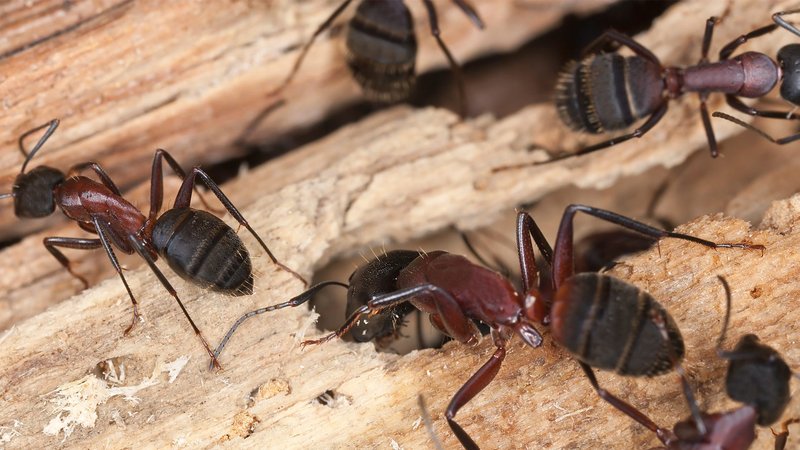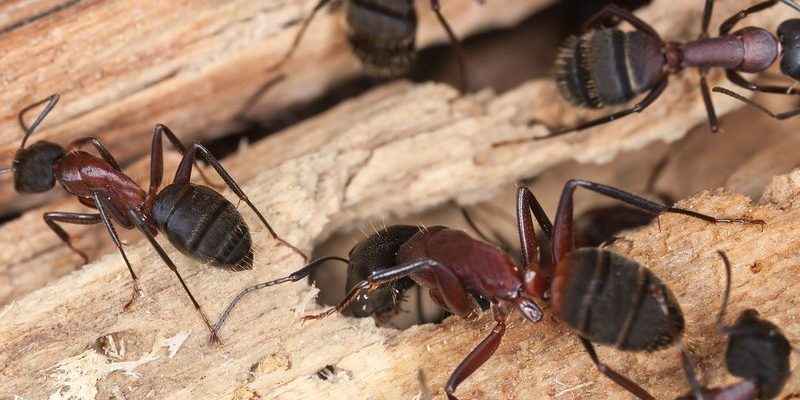
Imagine a tiny construction crew, armed with their mandibles instead of hammers, transforming wood into homes. But their talents don’t stop there; these ants also help with pollination, affecting the growth of plants and flowers in ways you might not expect. So, what’s the scoop on carpenter ants, and what exactly do they contribute to our environment? Let’s dig in and see how these little critters work both above and below ground.
Understanding Carpenter Ants
Carpenter ants belong to the genus Camponotus, and they’re easily recognized by their size and black coloration, though some species have reddish or yellowish hues. Think of them like the gentle giants of the ant world. They can grow up to 1 inch long! Unlike termites, which munch through wood, carpenter ants create tunnels by chewing it up. It’s kind of like a woodworking project gone awry, but instead of making furniture, they make nests.
You might be surprised to find that they thrive in both forests and urban areas. They often prefer moist, decaying wood for nesting—like tree stumps or old beams. So, if you spot them in your backyard, it might just mean they’ve found a cozy home in some forgotten wood. Honestly, it’s a testament to how adaptable these creatures are!
The Role of Carpenter Ants in Pollination
You might be wondering how carpenter ants fit into the world of pollination. After all, we usually think of bees and butterflies as the stars of the show. Here’s the thing: while carpenter ants aren’t primary pollinators, they do contribute to the process. As they move from plant to plant in search of food, they inadvertently transfer pollen along the way.
Consider this: when carpenter ants visit flowers for nectar, they can pick up fine pollen grains. When they move on to the next bloom, they drop some of that pollen off. It’s a small act, but it helps plants reproduce, ensuring that both wildflowers and cultivated crops can thrive. Without these tiny workers, some plants might struggle to produce the next generation.
How Carpenter Ants Benefit the Ecosystem
Carpenter ants are like nature’s little janitors. By breaking down decaying wood and plant matter, they help recycle nutrients back into the soil. This activity is vital for forest health because it promotes growth in other plants. The decomposed material becomes rich soil, giving rise to new life—think of it as nature’s composting system.
These ants also provide food for various predators. Birds, small mammals, and even some reptiles rely on them as a food source. If carpenter ants were to disappear from an ecosystem, it could set off a chain reaction, altering the balance and affecting many other species. Just goes to show how interconnected everything in nature is!
Carpenter Ants and Tree Health
While many people think of carpenter ants as destructive, especially when they invade our homes, it’s important to note that they also contribute positively to tree health. When they tunnel into trees, they often target unhealthy or dying parts. This behavior can help the tree shed dead wood, which can allow more sunlight and moisture to reach healthier areas.
You can view this as nature’s way of prioritizing health. While it may seem counterintuitive, these ants can help trees by promoting new growth and maintaining the ecosystem’s balance. So, while you might not want them gnawing at your wooden structures, in nature, they’re doing their part.
Common Misconceptions About Carpenter Ants
Many myths surround carpenter ants, and it’s time to clear the air. One common belief is that they destroy healthy wood. In reality, they prefer damaged or decaying wood. So, if you see carpenter ants in your home, it might be a sign that there’s some rot or moisture issue that needs your attention.
Another misconception is that carpenter ants are the same as termites. While both infest wood, they have different behaviors and living habits. Carpenter ants don’t consume wood; they tunnel through it to create nests. Understanding these differences can help you manage any unwanted visitors more effectively.
Managing Carpenter Ants in Your Home
If you find carpenter ants in your home, don’t panic. Here are some steps you can take to manage their presence:
- Identify the source: Look for damp or decaying wood where they may be nesting.
- Reduce moisture: Fix leaks and improve ventilation to prevent wood from rotting.
- Seal entry points: Check for cracks and gaps around windows, doors, and foundations, sealing them as needed.
- Consult a professional: If the issue persists, calling an exterminator familiar with carpenter ants can provide effective solutions.
Remember, these steps not only help with carpenter ants but can also improve the overall health of your home.
Carpenter ants are more than just pests; they play a critical role in our ecosystem. From aiding in pollination to enhancing tree health, these industrious insects are a vital part of the natural world. While managing them in your home is essential, it’s also important to appreciate the good they do outdoors. So, the next time you see a carpenter ant, take a moment to recognize its contributions. After all, in nature, every creature has its job, and carpenter ants are no exception!

